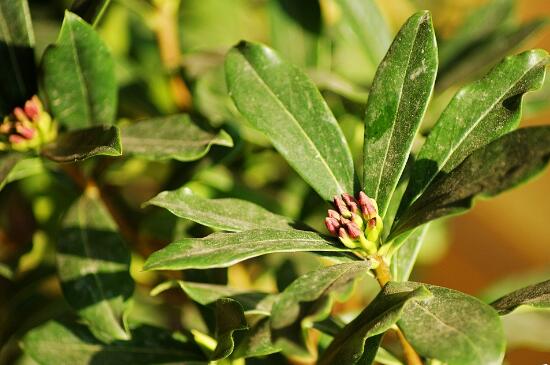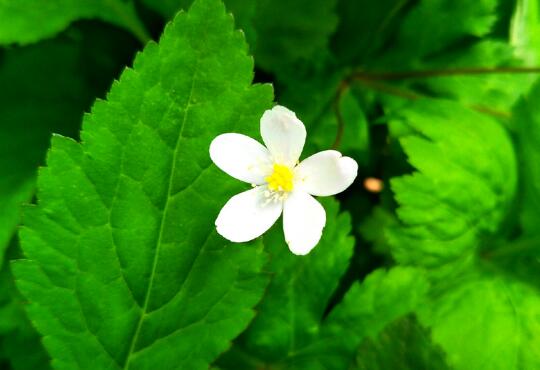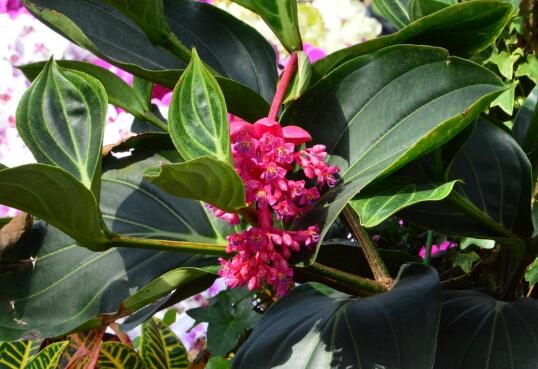What to do with the growth of insects in Daphne fragrance flowers? disease and pest control of Daphne fragrance flowers / 4 insects and 2 diseases
Daphne, a beautiful ornamental flower, not only looks good, but also has strong disease resistance, so it is very suitable for keeping indoors and is deeply loved by flower friends. But in the process of breeding, because of some reasons, Daphne odorifera will still grow insects and get sick, affecting plant growth. So, what should we do if the Ruixiang flowers grow worms? The following is the pest control of Ruixiang flowers, let's go and have a look!
First, how to do when the Ruixiang flower grows worms, spray with medicine

Although Daphne odorifera has strong disease resistance, it will also have insect pests and occasional diseases in the case of poor growth environment and improper maintenance. Among them, attention should be paid to insect pests such as aphids, red spiders, shell insects, earthworms, etc., and diseases include mosaic disease, root rot and so on. So what if the Ruixiang flowers grow worms? It's very simple, you just need to identify the pest, and then solve it by spraying.
II. Pest control of Daphne odorifera
1. Aphids
Although Daphne is not easy to infect insects, it is also vulnerable to aphids if the environment is different in hot summer weather. The insect generally parasites on the leaves and absorbs juice. Symptoms of being violated: the leaves of Daphne odoratum are yellow and withered, and in severe cases, the color of the flower can be reduced and wither quickly.
Prevention and control methods: after finding aphids, if the quantity is very small, you can take artificial control of aphids, brush off the aphids with a brush and bury them in the basin soil; when there are many aphids, you can use 40% Kuailing wettable powder 20003000 times liquid spray, the effect is particularly good.
2. Red spider
To say that Ruixiang flower long worm, red spider also needs to pay attention to, it uses mouthparts to pierce into the leaves of Ruixiang flowers to suck juice, so that the chlorophyll of the plant is destroyed, the leaves show gray-yellow spots or patches, and the leaves become withered and yellow, or even fall off.
Prevention and treatment: usually should pay attention to the observation of flowers, found that the above symptoms, timely check the back of the leaves. When individual leaves are damaged, insect leaves can be removed; when more leaves are damaged, propargite, dicofol, dimethoate, Huachongjing and other drugs should be sprayed as soon as possible to control them.
3. Scale insects
Shell insect, one of the insects that all flowers hate, Ruixiang flower long worm, may also be it. The insect often gathers on branches, leaves and fruits, and the mouthparts of adults and nymphs are inserted into the leaves and branches of taro to absorb juice, resulting in wilting leaves and inducing coal fouling disease.
Control methods: when there are few shell insects, gently brush them with a soft brush or wipe off with cotton balls and towel gourd stems; when there are too many shell insects, you can choose 40% omethoate, 50% malathion, 80% dichlorvos EC 800-1000 times, spray every 7-10 days, 2-3 times in a row, can effectively prevent the damage of shell insects.
4. Earthworms
Because the root system of Daphne odorifera has sweet taste, it is easier to attract earthworms. The insect will wrap around the root of Daphne odorifera, thus affecting the normal absorption of water and nutrients by the root system, resulting in poor growth of the plant.
Prevention and control methods: turn more pots, find earthworms hidden in the basin soil, get rid of them; during daily maintenance, do not put flowerpots on the soil to prevent earthworms from drilling into the bottom of the basin.
5. Mosaic disease
In addition to the long insects, Daphne odora also has occasional diseases, one of which is mosaic disease, which is the most common disease of flowers. Disease symptoms: the damaged leaves of Daphne odorifera showed color spots and deformities, resulting in poor flowering and stagnation of plant growth.
Prevention and control methods, diseased plants should be removed in time to reduce the source of the disease. When the disease is serious, 50% methyl topiramate 1200 times foliar spray can be used for disinfection to prevent transmission.
6. Root rot
In winter, if too much watering or poor drainage of the basin soil, resulting in the basin soil too wet, or the application of unripe organic fertilizer, Daphne flower is often prone to root rot. Symptoms: the roots and stems of Daphne odorifera are black and rotten.
Prevention and treatment: after the above diseases are found, the rotten parts of the flowers are cut off, applied with sulfur powder, and then replanted with fresh culture soil. After that, move the potted plant to a ventilated sunny place, and soon, the Daphne will return to health.
What about the drooping leaves of Daphne odorifera? Change the basin soil
If you find that the leaves of Daphne odorifera droop, you should first look at whether it is the problem of the soil and change the soil in time.
two。 Repair the root
The drooping leaves of Daphne odorifera may also be caused by problems with the roots, so the roots should be examined and the rotting roots should be cut off to improve the situation.
3. Culture environment
Drooping leaves may also be something wrong with the culture environment, because the fragrant flowers like warmth, fear the hot sun, like the shade, and fear the cold. It should be shaded and sheltered from rain in summer and placed indoors in sunny shelter in winter.
4. Indoor air
The living environment of Ruixiang flowers should not let there be soot and oil fume indoors. And you can't get cold, it's too cold. If the air is not warm and clean enough, it is likely to affect its growth.
Since the cultivation of Ruixiang must do a good job, due diligence, dedicated cultivation in order to let it bloom beautiful flowers. We should also pay attention to doing a good job of killing insects. There are many varieties of Daphne. Let's learn more about the varieties of Ruixiang flowers.
How to propagate Ruixiang flower, the cutting method of Ruixiang flower / Qingming cuttage takes root in 40 days.
The efficacy of Daphne odorifera should be clear to those who have raised it. It not only blooms beautifully, but also exudes a charming fragrance. It can be used as medicine to treat various diseases. Such plants are naturally propagated in large numbers, so how do Daphne reproduce? The pleasure of growing flowers is to do it yourself. the following editor will introduce a method of breeding Ruixiang flowers. Let's go together.
How to propagate and cut Daphne odorifera
When it comes to breeding Daphne, there are many methods, such as sowing, striping, grafting and cutting, but the first three have high propagation conditions and slow results, so they are not suitable for wide use. Cuttage, that is, choose a branch of Daphne odorifera as cuttings, insert it into the cutter, wait for it to grow to a certain height, it can be divided into pots.
2. Cutting methods of Daphne odorifera
1. Cutting time
If you want to have a high survival rate after cutting, you must first choose a good time. According to the growth habits of Daphne odora, it is suitable to be carried out before the Qingming Festival and the Beginning of Summer, or in autumn, and the specific time can be chosen on a sunny day.
2. Cuttings selection
In the cutting method of Daphne odorifera, the selection of cuttings is particularly important. If the cuttage is from April to June, we should plant it in a Daphne pot and select the sturdy top twigs of that year as cuttings; if it is cuttings from July to September, we should choose sturdy semi-lignified branches of the same year as cuttings.
Treatment of cuttings: the length of cuttings is generally 5-7 cm, the leaves at the lower end should be removed, and 2-3 leaves should be retained at the top. After the cuttings were selected, they were bundled and soaked in 50-100mg/L NAA solution for one day.
3. Cutting substrate
For the insert bed of Daphne odorifera, it is best to choose loose, well-drained acid sandy mountain soil or burning soil.
4. Cuttings start
With the above preparatory work done, the cutting method of Daphne can be officially started. Insert the treated cuttings into the prepared substrate with a depth of 1 beat 2 to 1 prime 3 of the total length.
5. Maintenance after insertion
After the cutting of Daphne odorifera, properly water it, keep the water content of the substrate at about 20%, move it to a place where the shade is above 70%, and keep the bed temperature at 25-30 ℃. After doing so, it can take root in about 40 days, and then apply diluted liquid fertilizer every 10-15 days. When the seedling height is 10-15crn, it can be divided into pots, and then can be maintained normally according to the breeding method of Daphne odorifera.
Generally speaking, it is not difficult to cut Ruixiang flowers, but in the process of transplanting, we should pay attention to two points: first, if you transplant in summer, it should be carried out in the morning and evening or in a cool weather; second, seedlings should bring more persistent soil, and the branches should be trimmed and shaded properly to survive. With regard to the breeding methods of Daphne odorifera, this is the end of the editor's introduction, hoping to give you some help.
- Prev

Common diseases and insect pests of anemone and their control, drug control is effective.
Plant diseases and insect pests are the most unwanted problems in the process of plant growth, and anemone is no exception. This kind of problem is very harmful to the plant, which will not only affect its ornamental, but also lead to the phenomenon of plant withering and death. About the common diseases and insect pests of anemone and how to control them
- Next

How to deal with the long insects of Bao Lotus? The pest control of Bao Lotus/4 pests 1 disease
When we cultivate lotus flowers, the last thing we want to encounter is diseases and insect pests. This kind of problem is very harmful to the plants, which will not only affect the beauty of the plant type, but also cause the plants to die when it is serious. What should we do if the lotus flowers grow insects? How does the pest control of lotus flower need to be done?
Related
- Fuxing push coffee new agricultural production and marketing class: lack of small-scale processing plants
- Jujube rice field leisure farm deep ploughing Yilan for five years to create a space for organic food and play
- Nongyu Farm-A trial of organic papaya for brave women with advanced technology
- Four points for attention in the prevention and control of diseases and insect pests of edible fungi
- How to add nutrient solution to Edible Fungi
- Is there any good way to control edible fungus mites?
- Open Inoculation Technology of Edible Fungi
- Is there any clever way to use fertilizer for edible fungus in winter?
- What agents are used to kill the pathogens of edible fungi in the mushroom shed?
- Rapid drying of Edible Fungi

